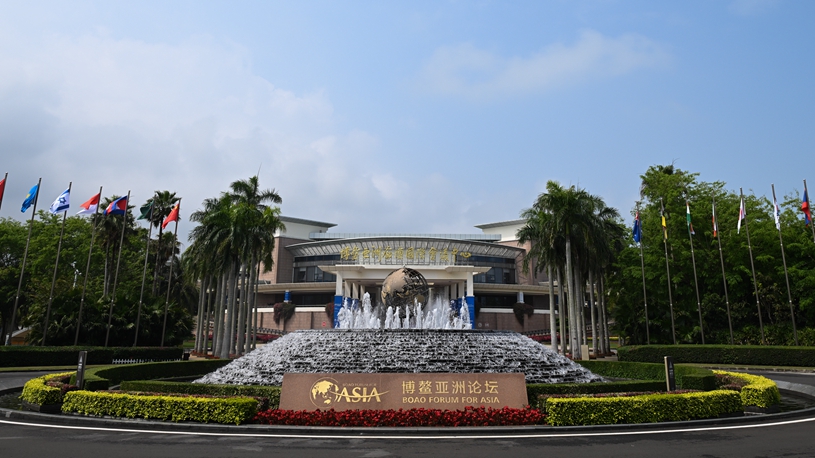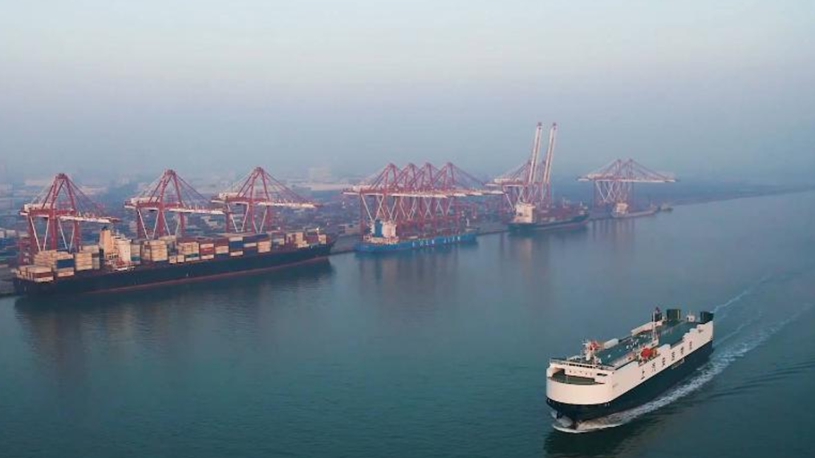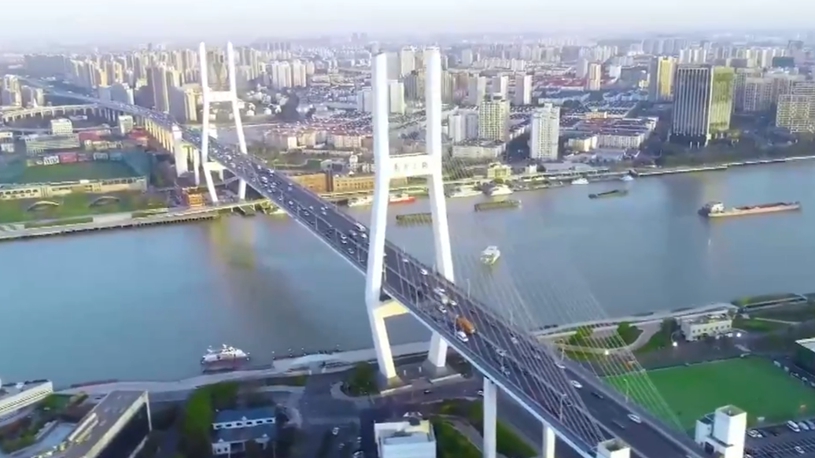* China's gross domestic product grew by 4.8 percent year on year in Q1, quickening from a 4-percent increase in the previous quarter.
* This positive start to the year has defied uncertainties stemming from the Russia-Ukraine conflict and a resurgence of domestic COVID-19 infections.
* The long-term economic fundamentals remain sound and the continued momentum of economic recovery has not changed.
BEIJING, April 20 (Xinhua) -- With several economic indicators showing slower increases in the first quarter (Q1) of the year, some analysts are concerned that China is falling into a further slowdown, or even a slump. But is this actually the case?
A closer look at the economic performance would prove that such concerns are overblown as the world's second largest economy remains resilient with a super-large market, complete industrial and supply chains and huge domestic demand.
China's gross domestic product (GDP) grew by 4.8 percent year on year in Q1, quickening from a 4-percent increase in the previous quarter, data from the National Bureau of Statistics (NBS) showed on Monday. This positive start to the year has defied uncertainties stemming from the Russia-Ukraine conflict and a resurgence of domestic COVID-19 infections.
Though lower than the 5.5-percent annual growth target set by policymakers in March, the Q1 growth will not "drag down" China's economic development in 2022, which mainly depends on economic operations in Q3 and Q4, according to Li Daokui, an economist with Tsinghua University.
Overall, China has shown solid economic performance in Q1 and a 4.8-percent GDP expansion represents fairly rapid growth, Li told Xinhua.
BRIGHT SPOTS
A breakdown of the NBS data shows that the performance of the industrial sector and investment beat market expectations.
In the first three months, China's value-added industrial output went up 6.5 percent year on year, and fixed-asset investment jumped 9.3 percent. In particular, investment in infrastructure rose 8.5 percent.
As infrastructure projects usually last for longer periods, they are expected to maintain their momentum over the following quarters, according to Li.
China's industrial upgrades and improvements in economic structure were also revealed in the NBS data, with the high-end manufacturing sector posting 14.2 percent output growth and final consumption spending contributing 69.4 percent of GDP expansion.
In Q1, the output of new energy vehicles logged a marked increase of 140.8 percent, while that of solar batteries jumped 24.3 percent year on year, pointing to the country's continuous transition toward green growth.
"The long-term economic fundamentals remain sound and the continued momentum of economic recovery has not changed," NBS spokesperson Fu Linghui said.
Looking into the full year, Fu expressed confidence in the economy, citing favorable conditions including reviving consumption, stronger investment, and innovation-driven industrial upgrades.
CHALLENGES VERSUS FAVORABLE CONDITIONS
The data showed that a range of contact-based sectors from catering, retail sales and employment have taken a hit as the Omicron variant has infected over 320,000 people across China since March, resulting in reduction or suspension of factory activities and freight transport.
Retail sales of consumer goods rose 3.3 percent year on year in Q1, but decreased by 3.5 percent in March, becoming one of major aspects to take off the shine of Q1 economic expansion.
However, the trend of recovery will not change and consumption will continue to function as the "ballast stone" of China's economy, Fu said.
Authorities have pledged more measures to boost consumption, including encouraging spending on home appliances and other big-ticket items, and supporting purchases of new-energy vehicles.
Due to the COVID-19 disruption, China's unemployment rate climbed slightly in Q1, with the surveyed urban unemployment rate reaching 5.8 percent in March and 5.5 percent in Q1. This is usually a peak season for job hunting activities as it comes just after the lunar new year holiday.
However, China's employment situation has remained generally stable thanks to its job-first policy and ever-increasing support for struggling businesses, Fu said.
Authorities have vowed to channel more unemployment insurance funds to underpin employment and training, and provide job seekers with no fewer than 1 million internship openings this year.
China's economy is still relatively resilient and able to cope with challenges, said Liang Guoyong, a senior economist with the United Nations Conference on Trade and Development. He noted that China's macroeconomic policies have remained generally stable since the pandemic's outbreak, avoiding the excessive stimulus policies of major developed economies.
"This means that the Chinese government has retained sufficient economic policy tools and macro-adjustment measures to ensure the smooth operation of the economy," he said.

PRO-GROWTH POLICIES IN MOVE
In order to reduce the burden on enterprises and further stabilize the economy, the country has adopted a series of measures, including cutting the cash amount banks must hold in reserve in the central bank and advancing a large-scale tax and fee cuts and rebates.
On Friday, the central bank announced the cutting of the reserve requirement ratio for financial institutions by 0.25 percentage points. Designed to support the real economy, the move is expected to free up 530 billion yuan (82.8 billion U.S. dollars) in long-term liquidity.
Most recently, at a national teleconference on ensuring the stability of supply and industrial chains on Monday, Chinese Vice Premier Liu He urged efforts to eliminate obstacles to goods flows across the nation.
The country will create a "white list" of foreign trade firms and companies in the automobile, medical and other key sectors, according to the meeting.
Despite short-term fluctuations in several economic barometers, foreign investors have shown their confidence in Chinese market.
According to recent reports by the German Chamber of Commerce in China and the American Chamber of Commerce in China, 71 percent of German-invested companies and over 60 percent of U.S. companies plan to increase investment in China.
Foreign investment in China's high-tech industry grew 50 percent year on year in Q1, of which high-tech services sector posting growth of nearly 60 percent.
This fully illustrates that "investing in China is investing in the future," analysts said.
"Although the Chinese economy will come under near-term pressure because of pandemic controls, we remain confident in China economy's long-term resilience and vitality," a CNBC report quoted Monica Li, director of equities at Fidelity International, as saying.
Oliver Zipse, chairman of the Board of Management of BMW AG, said the group is quite optimistic about the mid- and long-term prospect of the Chinese market.
"Looking ahead, we are encouraged by China's pledge to further open its market, as well as its efforts to promote green development and innovation," he said. ■
(Video editor: Zhu Cong)












